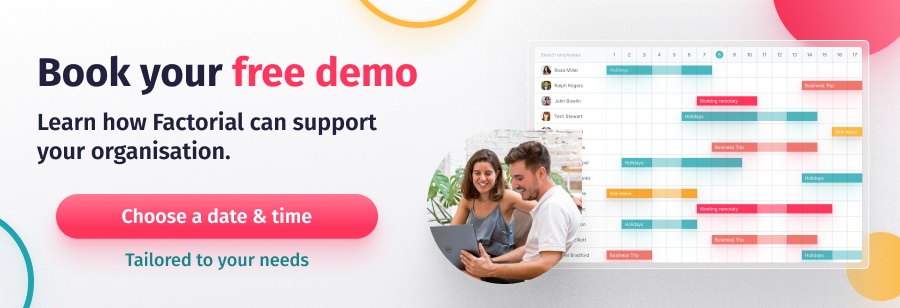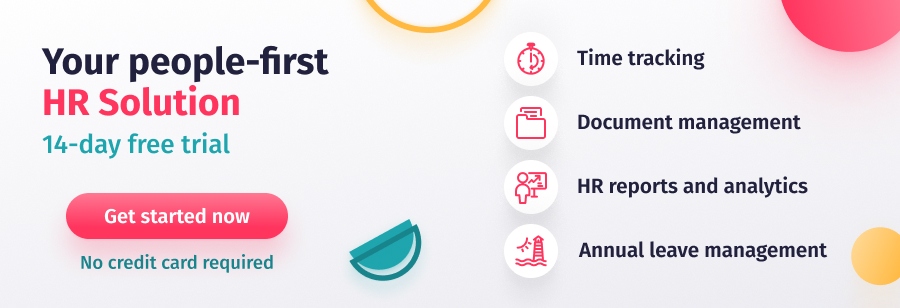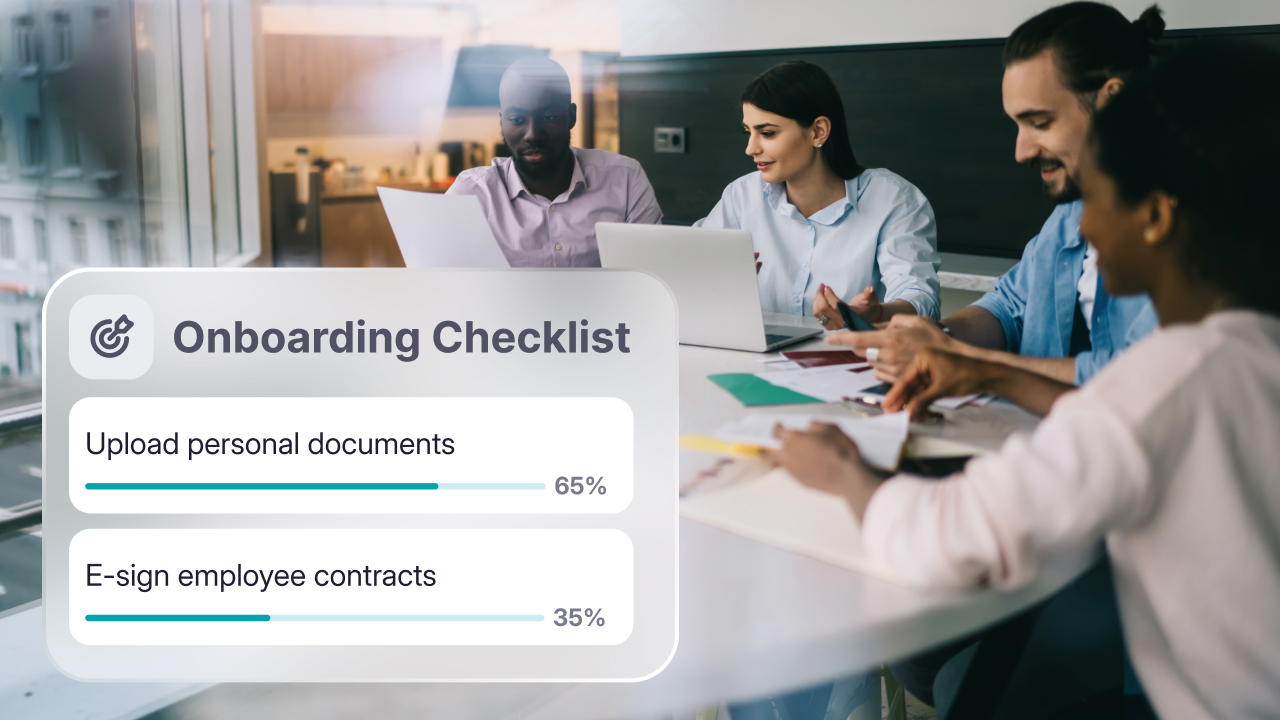Career development planning is a road map for the professional development of your employees. With an effective plan in place, you can help your employees map a career path to help them work toward their professional and personal goals within your company and beyond.
A report from Gallup found that as many as 59% of millennials are looking for opportunities to learn and grow when applying for a job. In this competitive job market, companies must highlight their commitment to career development early to attract talent.
In this article, we will discuss how to build an equitable career progression plan to support the needs of both your business and your employees.
What is Career Progression?
Career progression is how an employee moves forward in an organisation. It is also called a “workplace journey” or career growth. This advancement may include a salary increase or a change in job title and responsibilities (or sometimes all three!). In any case, career progression involves granting employees opportunities and encouraging development and growth.
Employees may move through a series of positions throughout their professional life, and both employer and employee need to have a mutual understanding of the direction and plan. For this reason, career development plans are often used to map out the course of an employee’s career.
Why is Career Development Important?
Some workers know the answer to the interview question, “Where do you see yourself in 5 years?”. But for some, the future isn’t so clear. Either way, it is important to employees that their organisation actively considers their development. In fact, for 60% of UK professionals, career development is an integral part of a job search and includes more than just promotions and pay raises.
Employees want to:
- Gain more industry knowledge.
- Develop and expand their skillsets.
- Feel satisfied and fulfilled in their career.
What are Career Development Plans?
A career development plan is a documented strategy that maps how an employee will grow and advance within an organisation. They are usually broken up into short-term, medium-term, and long-term goals.
Through evaluation and collaboration, individuals, HR professionals, and line managers can work to establish a plan that fulfils the expectations of all parties.
The Benefits of Career Development Planning
Most people want to progress in their careers, and career opportunities help them feel valued within their organisation. Not only that, but career progression and development help employees see their work as more than ‘just a job.’
There’s also a strong business case for building career development into HR policy, including:
- Greater ROI from employees. Yes, upskilling makes people better at their jobs, but development opportunities also increase motivation and productivity. By implementing career development strategies within your organisation, you gain a more significant ROI from your employees.
- Higher employee engagement. Employees are more engaged and focused when they see a clear path to career growth ahead of them.
- Lower turnover. Businesses benefit from a lower turnover rate by focusing on employees’ professional growth.
- Reduced hiring costs: Career development nurtures internal talent, which can save costs on external hiring.

Ensuring Diversity in Career Progression
Look to the makeup of those who hold higher positions in your company. Are they representative of a diverse workforce? Are there obstacles that could prevent team members from advancing their career paths?
Everyone must work to eliminate structural barriers preventing marginalised groups from equitable access to career options. So, how can HR do its part to encourage diversity and inclusion in the workplace?
Uphold DE&I in the company’s mission
Keep track of the outcomes of the company’s DEI initiatives. In what ways has the company made an effort to encourage career development for underrepresented employees? Show where the company struggles and the intended direction of growth.
Include employee input
With all of the company’s diversity initiatives, including employees throughout the process is essential. Many team members who experience unconscious bias might feel the company’s DE&I efforts are ineffective. Encourage employees to participate in finding better ways to tackle obstacles and achieve career growth.
Measure employee progress
Use reports and analytics to measure promotion and professional development. Are many underrepresented employees staying in the same position? Do the numbers reflect potential biases in the workplace? Use the statistics to target and resolve problematic situations and policies.
Promote inclusive policies
As many as 45% of men and 54% of women research prospective employers to see if they have diversity and inclusion policies before taking a job. Exclusive policies can not only put off potential talent but damage employees’ psychological safety and ultimately prevent them from career development. Work towards making team members feel protected and supported by the company’s principles.
Everyone should be given the opportunity for advancement. But how can HR managers provide the framework for career growth? What do HR managers need to do to get started?
How to Create a Career Progression Plan
Career progression planning does not have to be complicated. Here are some easy-to-follow steps to kick off your employees’ career growth.
Step 1 – Discuss Career Aspirations
You won’t know where to start if you don’t know where you’re going.
Set up a one-to-one meeting when you both have time. This is an excellent opportunity to ask your employee how they would like to progress in their career, what they want to achieve, and their overall career ambitions. Encourage the individual to be open and honest about their career goals and aspirations, even if they don’t align with their current role. Actively listen and avoid interruptions; this session concerns career exploration and learning about your employee.
Asking thoughtful questions about their career plans and goals will help you work together to develop an exceptional career progression plan.
Questions to ask:
- What do you enjoy about your current role?
- What motivates you?
- Where do you see yourself in 5 years?
- What are your short-term and long-term goals for your career development?
- How would you define success in your career?
- Are there any new skills you want to develop?
- Are there any projects you want to be a part of or any responsibilities you would like to look at taking on?
Step 2 – Explore Strengths and Weaknesses
Defining strengths and weaknesses will give you both a great starting point.
Performance Reviews
Regular performance reviews are usually part and parcel of any employee, but they can also be used effectively in the career development process.

Feedback
If your organisation uses the 360-feedback method for performance reviews, you will also have this information available. If not, speak to the people who regularly work with the individual working on their professional advancement. Ask about their leadership skills, team building, project management, problem-solving skills, and other essential skills they use in their current job and any skill gaps they perceive.
Employee Self-Assessment
Self-evaluation can be a great starting point for assessing personal career development and progress. These assessments help your employees identify where they have gained knowledge and need to improve. The self-evaluation is also a way for your employees to document their accomplishments and the skill set they are developing for future review.
After they’ve completed their self-assessment, employees can look for areas where they’re excelling and where they want to improve.
Combining these three tools will give you a holistic view of your employee’s current performance, allowing you to figure out how to support their growth and development.
Step 3 – Map Out a Career Path
Together with their aspirations, goals, current skills, experience, areas of expertise, and areas for improvement, you can determine long-term career goals, drawing a reasonable timeline for the next 5-10 years. This should consider the level of responsibility, the type of work, and the salary they want.
Now write them down.
Research shows you should do more than that and talk about your goals and aspirations too. A study found that those who wrote down their aspirations and then sent weekly updates to a friend were 30% more likely to achieve them than those who didn’t write them down.
Step 4 – Address Any Gaps in Skills and Knowledge
Develop a plan to address the skills and knowledge gaps the individual will need to reach their goals. Suggest researching requirements for the type of role they want and thinking more broadly about how they might upskill to get there.
Here are some upskilling routes to consider:
- Formal training: Map out the online courses, degrees, seminars, workshops, or other forms of training that will support their goals.
- Mentoring and coaching: Mentors, coaches, and career counsellors can help navigate career paths and provide support.
- On-the-job learning: Rotation and shadowing opportunities can help people gain experience in different areas of an organisation and learn new skills.

Step 5 – Set SMART Goals
Using SMART goals can help to plot them and measure progress along a timeline. This framework also helps to clarify ideas, focus efforts, and use time and resources effectively, ultimately increasing the chances of success.
SMART goals are:
- Specific
- Measurable
- Attainable
- Relevant
- Time-Bound
Step 6 – Make an Action Plan
Before you finalise the plan, could you arrange a meeting with the employee to discuss the career progression plan? This is a collaborative process, so ensure the employee has no further feedback or suggestions. Once both parties have decided the plan is ready, it’s time to get started on their career progression!
Creating a career plan isn’t enough; you must gather the necessary resources to support your employee. As an employer, providing your employees with the necessary tools and resources to reach these goals is essential.
Step 7 – Track Progress and Review Regularly
Schedule regular meetings to review the employee’s career development and growth and ensure they’re on track. Evaluate progress together, discuss accomplishments and challenges, and discuss strategies for overcoming anything they’re concerned about.
Remember that career development is a continuous process. Encourage setting new goals, reevaluating old ones, and making the necessary changes to keep the plan relevant and current.
Step 8 – Provide Ongoing Support
Employees focusing on their career growth benefit hugely from being able to seek advice, whether they’ve hit a bump in the road, seen some new job opportunities, or they’re up for a big promotion.
You can make yourself open and available so the individual feels comfortable contacting you when needed. It doesn’t hurt to check in with them regularly too!
Aligning Employer & Employee Needs
It’s essential to analyse whether the employee’s career growth and personal development ambitions align with the company’s needs. Ultimately, the development plan must work for the company and the employee.
But even if they don’t align, there are still ways that you can support the growth and development of your employee, keeping them motivated and engaged but setting them up for a position elsewhere in the future.
How HR Can Manage Career Progression
Only 25% of employees reported they are confident about their careers at their current company. This represents a massive opportunity for HR teams. Through career progression planning, human resources encourage employees to take ownership of their roles and contribute to the organisation. HR’s efforts impact individual employees’ comfort levels and the company culture‘s tone. Organisational and interpersonal skills are both necessary for successful career progression planning.
Talent needs to reach its full potential, and strong HR professionals put people first and help them achieve their goals every step of the way!
But HR needs to have the proper tools to help them do so. Performance management software is the best way to gain insight into your workforce and balance responsibilities. The software helps human resources professionals easily see and keep track of employee development. It can help with all of the decision-making stages and career progression management.





